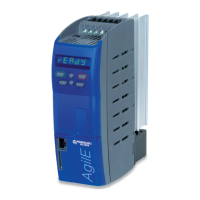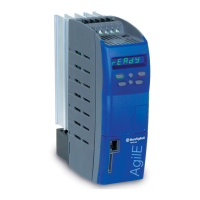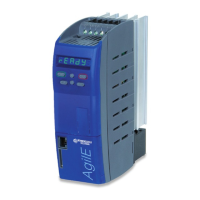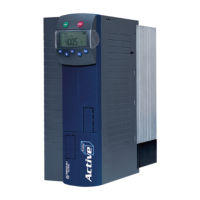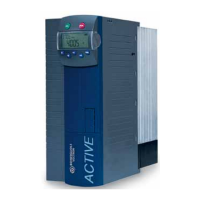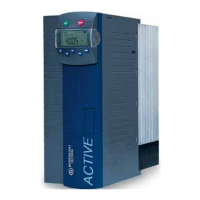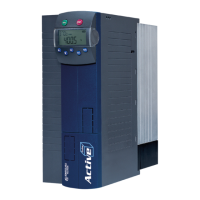%33,02O%,1831O
%33,1838333,1
2,1
2,2
%00,01%00,21
%00,100%00,001%00,220
==⇒
===
×
××
Example 4:
I1=
22000 P1 = 10 (factory setting)
P2 = 10 (factory setting)
I2= FALSE
I3= 1200
%33,02O%,1831O
%33,1838333,1
2,1
2,2
%0 0, 0 1%0 0, 2 1
%00,100%00,001%00,220
==⇒
===
×
××
If position values are used as input quantities instead of percentages, this will be interpreted as
follows:
%33,02O),Begrenzung(%67,3671O
%33,18333333,18
2,1
22
01u1200
10]FALSE[u22000
==⇒
===
×
××
Parameters P1 and P2 can also be used to scale the result:
O1 = Result "in front of decimal point"/scaling P1 (division)
O2 = Result "behind decimal point"/scaling P2 (multiplication)
5.4 Controller
Controllers can be built up from individual elements. This can be used for limiting the output
values of the individual elements.
5.4.1 [370] P controller
Type Function
Type Function
I1 %
Input (reference
value)
O1 %
2 I 1 I 1 PO 1 −×=
I2 %
Input (actual val-
ue)
O2 % inverted output = -1
I3 - -
P1 i P amplification (x.xx)
I4 b Master Reset
P2 % Limitation of output value
Description:
The control deviation (I1- I2) is multiplied by the amplification P1.
()
−×=− =
The output value is limited to ±P2.
As long as status TRUE is present at I4 (Master Reset), the output value I1 is 0.
Note:
Percentages [%] have two decimals.
For example: Value 12345
IN
= 123.45% = 1.2345
The amplification is entered with two decimals:
displayed value 123 = function value 1.23
